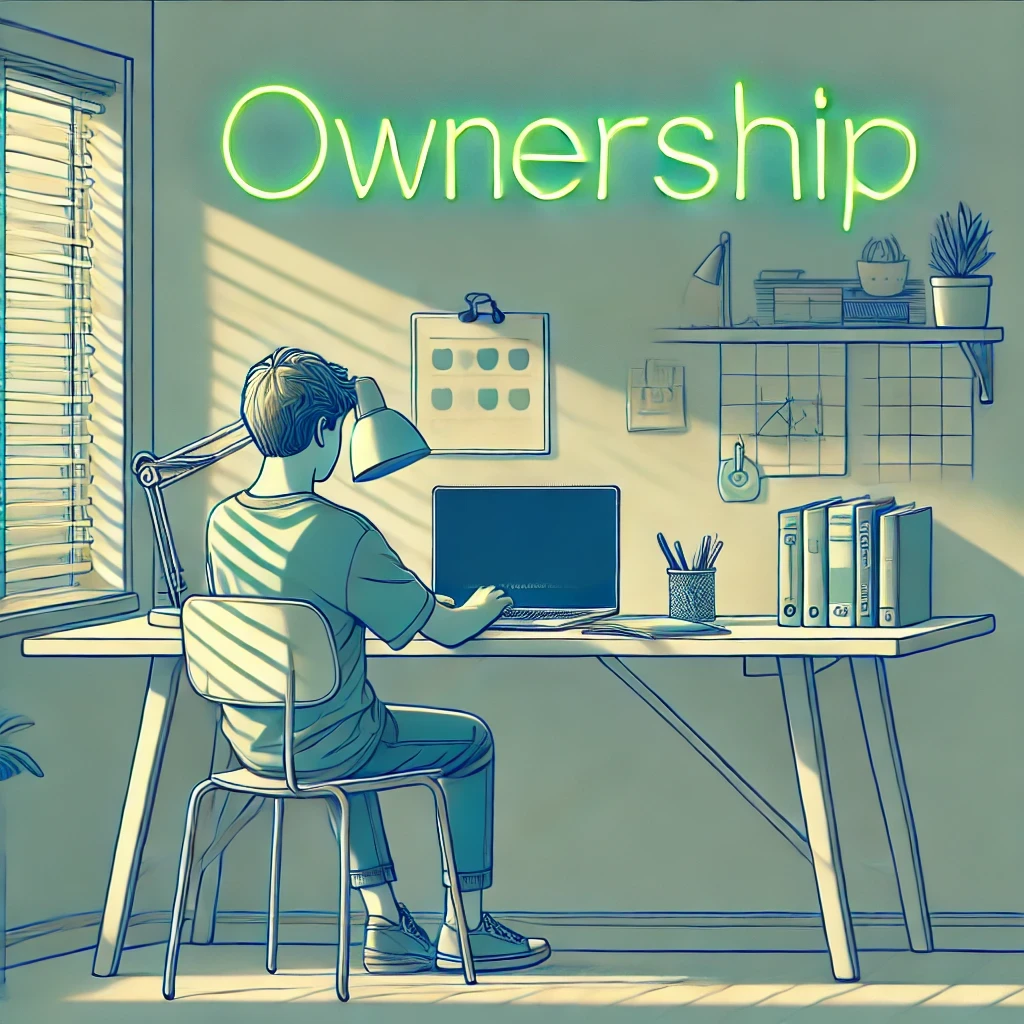
In my 20 years in education, it seems like students have needed more and more hand holding. A lot of teenagers are hesitant to take initiative, frequently look for reassurance, and often get overwhelmed by the idea of making decisions for themselves. At the same time, I get paranoid that I’ve become the old man yelling, “Kids these days.” After reading a few excellent books recently, I feel like there’s something behind it and a key to resisting this trend is the following: Students taking ownership of the college process.
One book that was a suggested reading at my school last summer was Jonathan Haidt’s The Anxious Generation, which was eye-opening and concerning. The book explains how shifts in technology – especially the rise of smartphones and social media and the decline of play-based childhoods – have contributed to a decline in resilience and independent problem-solving among young people. As Haidt notes, today’s students have grown up in a world where constant connectivity and curated online identities have made real-world challenges feel riskier and more intimidating. They’re less comfortable with ambiguity, more afraid of failure, and, as a result, more likely to lean on adults to navigate even basic tasks.
Another interesting read that gave me some new insight into our students’ mindsets is Jennifer Breheny Wallace’s book Never Enough. Never Enough, as the title indicates, explores how the pressure to achieve – whether in academics, extracurriculars, or college admissions – has left many students feeling like their self-worth is tied to external validation. With students conditioned to believe they must be perfect in everything and fear the perception of failure, it’s no wonder so many of them struggle to take ownership of a process as uncertain, fickle, and nuanced as college admissions… especially since it is often associated with “acceptance” and “rejection.” That is an intimidating situation for any of us, especially teenagers. Instead of making their own decisions, they often defer to parents, counselors, social media, or online rankings, afraid to get it “wrong” or being “rejected.”
Lastly, and the one that clearly articulated what I’ve been observing, was Ben Sasse’s The Vanishing American Adult. Sasse says that young people are growing up without the same experiences of responsibility and self-sufficiency that earlier generations had. When students are shielded from failure and challenge, they don’t develop the confidence needed to make big life choices on their own. This perfectly aligns with changes I’ve seen in education, accountability, and college planning — students often expect adults to do work for them, not because they’re lazy, but because they genuinely don’t know how to take control of a situation.
These recent readings have me convinced of the importance of counselors actively encouraging students to take ownership of their college process. If we aren’t intentional about this, students will default to passivity, waiting for someone else to tell them what to do rather than thinking critically about what they want and need. Before I go into some specifics, I want to clarify that this is something I struggle with the most. It is often much easier to just do something for a student than to empower them to do it themselves, but I know that is not what is best for them. I will highlight some of the ways that I am trying to help students with self-reliance, responsibility, and accountability to help them become functioning adults. An added bonus to this is that, when students take ownership and handle small things themselves, the counselor is able to focus on other responsibilities to help students in other ways. Here it goes:
Building Ownership in the College Process
Here’s the good news: When I first read these books mentioned above, it was a bit discouraging and harrowing. Then I reminded myself that if students have been trending in this direction, it means that it is something malleable and they are still capable of trending back in the other direction and developing skills necessary to be responsible adults. A large part of this is counselors being aware of these changes and equipping students with the tools to make informed decisions and take an active role in their own futures. Here are a few practical strategies
-
- Shift from “What should I do?” to “What do I want/need?”When students ask broad questions like, “Where should I apply?” or “What’s the best school for me?” turn it back on them. Ask, “What matters most to you?” or “What have you found in your research so far?” This reframes the conversation and encourages self-reflection. This is the one question that the student has to answer for themselves to ensure that they are happy and successful in college. In Never Enough, Wallace explains how students often feel pressure to chase external validation instead of prioritizing what truly matters to them. Shifting the focus from “what should I do” to “what do I want” gives them permission to make choices based on personal fit rather than social comparison.
- Make students do the outreach.Instead of emailing colleges or scholarship organizations on their behalf, have students send the emails themselves. Provide a template (I have included a generic template you can share here), but make them take the step of reaching out. This builds confidence and shows them they’re capable of advocating for themselves. It also makes the student look like a more mature and responsible candidate for admission or scholarships. Sasse argues in The Vanishing American Adult that today’s young people often struggle with self-sufficiency because they haven’t had as many opportunities to practice real-world communication. Something as simple as writing an email to a college rep is a low-stakes way to start building that confidence.
- Encourage real exploration.College rankings, family and friends’ opinions, and media can distort students’ perception of what a “good” college is. Push them to go beyond name recognition by visiting campuses (virtually or in person), sitting in on classes, and speaking to current students. The goal is to move from passive assumptions to active research. Haidt’s research in The Anxious Generation shows how students raised in a digital-first world often default to online opinions and curated social media content rather than direct experience. Encouraging them to interact with colleges in real life (even virtually) forces them to engage in deeper, more meaningful exploration.
- Normalize uncertainty.Many students are paralyzed by the fear of making the “wrong” choice. Help them understand that there’s no perfect decision… college is what they make of it. Share stories of students who thrived in unexpected places to reinforce this. In Never Enough, Wallace highlights how students today fear failure more than ever because they’ve been conditioned to seek perfection. Helping them see that uncertainty is part of life, and that they can thrive in multiple environment, can ease some of that anxiety.
- Use a College Fit Worksheet.A structured activity where students rank factors like location, size, academic programs, and campus culture can help them clarify priorities. Instead of defaulting to what others say is important, they start defining their own must-haves. (I’ll provide a downloadable PDF for this!) Sasse points out in The Vanishing American Adult that many young people haven’t had to make big, independent decisions before. Tools like a ranking worksheet can give them a structured way to practice decision-making in a manageable way, rather than just relying on external input.
Ownership and the College List
One of the biggest ways we see this lack of ownership is in how students approach building their college lists. Too often, students default to the schools their parents, friends, or counselors suggest, without really thinking about what they want. Or they chase prestige without understanding what actually makes a school a good fit for them.
“College is a match to be made, not a prize to be won.” I wish I could remember which of my colleagues said this to me because it is probably the single best piece of advice in college counseling I’ve ever heard. It perfectly reflects the larger societal issues discussed in Never Enough where students often see college admissions as an evaluation of their worth rather than a process of finding the right fit. When students approach applications with this “match to be made” mindset, the entire experience shifts. Instead of feeling like every decision is a judgment on their intelligence, achievements, or identity, they can focus on what truly matters: finding a place where they will thrive.
A strong college list isn’t just a collection of names — it’s a reflection of a student’s self-awareness. The more they take ownership of this process, the more likely they are to end up somewhere they’ll thrive. That’s why an essential part of our job is making sure students actually engage with their lists, understand their choices, and take responsibility for the application process.
By shifting how we approach college counseling, we can help students become more self-sufficient, resilient, and prepared for the decisions ahead. They don’t need us to do everything for them”they need us to push them to take charge of their own futures.
Works Cited
Haidt, Jonathan. The Anxious Generation: How the Great Rewiring of Childhood Is Causing an Epidemic of Mental Illness. Penguin Press, 2024.
Sasse, Ben. The Vanishing American Adult: Our Coming-of-Age Crisis and How to Rebuild a Culture of Self-Reliance. St. Martin’s Press, 2017.
Wallace, Jennifer Breheny. Never Enough: When Achievement Culture Becomes Toxic And What We Can Do About It. Portfolio, 2023.
